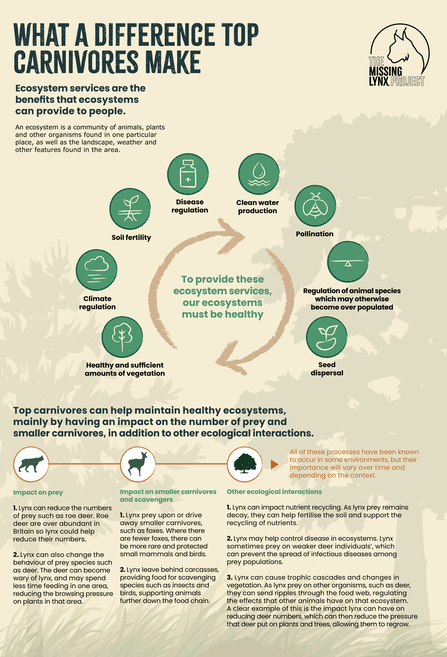
Top carnivores play an important role in their ecosystem, helping maintain the balance of life. Their actions produce a cascade of effects that can benefit other wildlife – and people, too.
What is an ecosystem?
An ecosystem is the term for a community of animals, plants and other organisms found in one particular place, as well as the landscape, weather and other features found in that area. It includes all of the different ways these organisms interact with each other and their environment.
An intact ecosystem has “the complete complement of species known or expected to occur in a particular site or ecosystem, relative to a regionally appropriate historical benchmark” (Plumptre et al. 2021).
This essentially means that for an ecosystem to be considered intact, all of the animals, plants and other organisms that should be found there, are there.
Why are intact ecosystems important?
An intact ecosystem is a healthy ecosystem, and healthy ecosystems are vitally important for nature and for people. They’re worth celebrating in their own right for the wildlife they support. But they also provide a wide range of benefits known as ‘ecosystem services’. These can range from capturing carbon to help combat the climate crisis, to providing the oxygen we breathe.

The role of top carnivores
Ecosystems are complex. Healthy ecosystems can support a huge diversity of wildlife, from tiny insects to plants, fungi, birds, mammals and more. All of these species are interacting with each other and their environment in countless different ways. The actions of one species often have an effect on the other species around it. But some species have a greater effect than others. This includes top carnivores, like the lynx.
Top carnivores are a key link in the food chain, a vital strand in the tangled web of life. Their actions don’t just affect the animals they feed on, they send ripples through the whole ecosystem. This cascade of effects shapes the way other organisms live. Their presence helps maintain healthy ecosystems.
Let’s look at some of the ways that lynx impact the ecosystem around them…

A missing link
Removing a top carnivore from an ecosystem can have a big impact. For example, lynx mainly prey on roe deer, which helps to keep roe deer populations in check. On top of this, the presence of lynx in an area makes the deer more wary. They spend less time feeding in one place. By reducing the number of deer and stopping them lingering in one place, lynx also reduce the browsing pressure on trees and other plants. This gives the plants a better chance to grow, creating a home or food source for lots of other wildlife.
